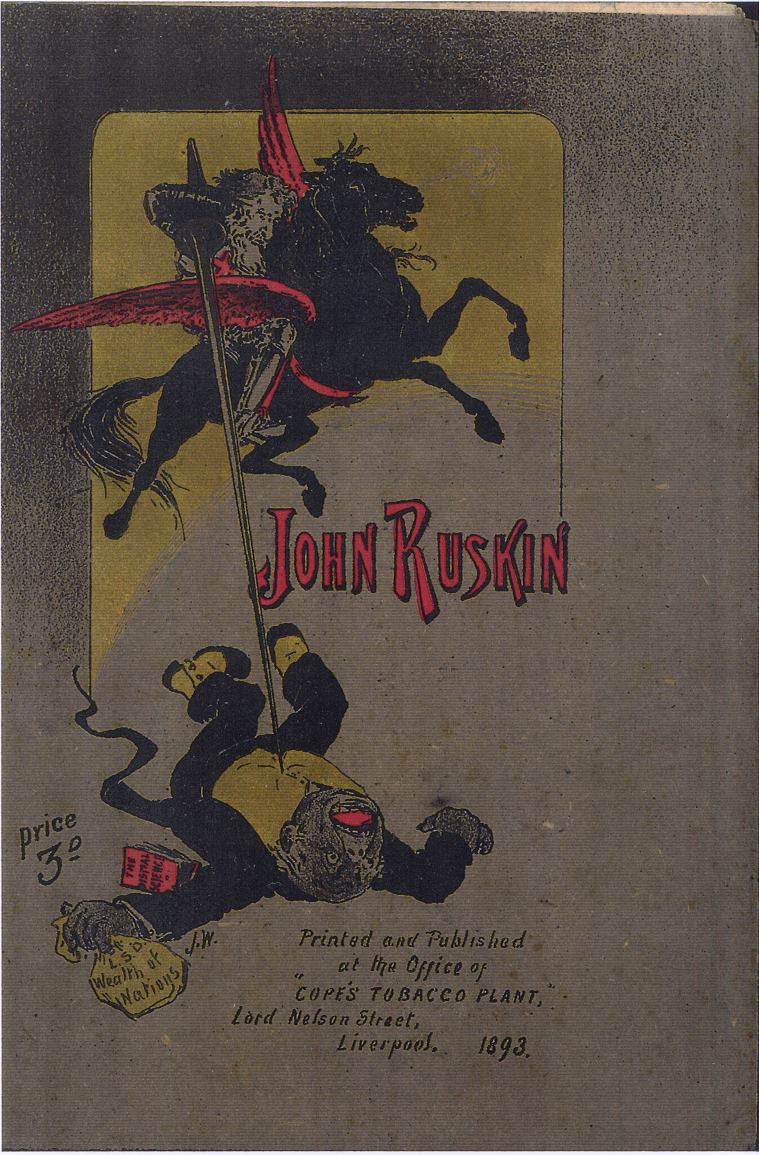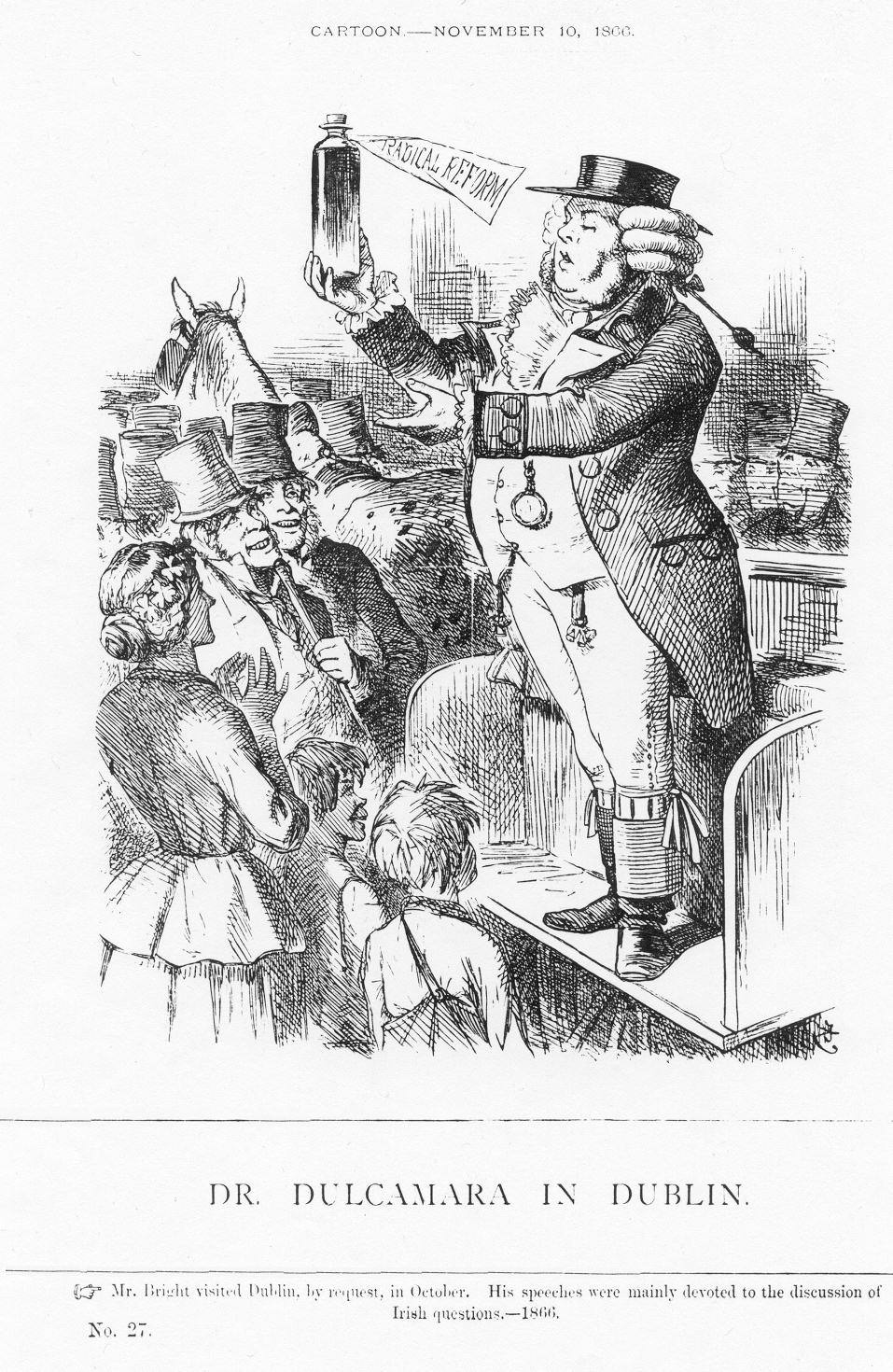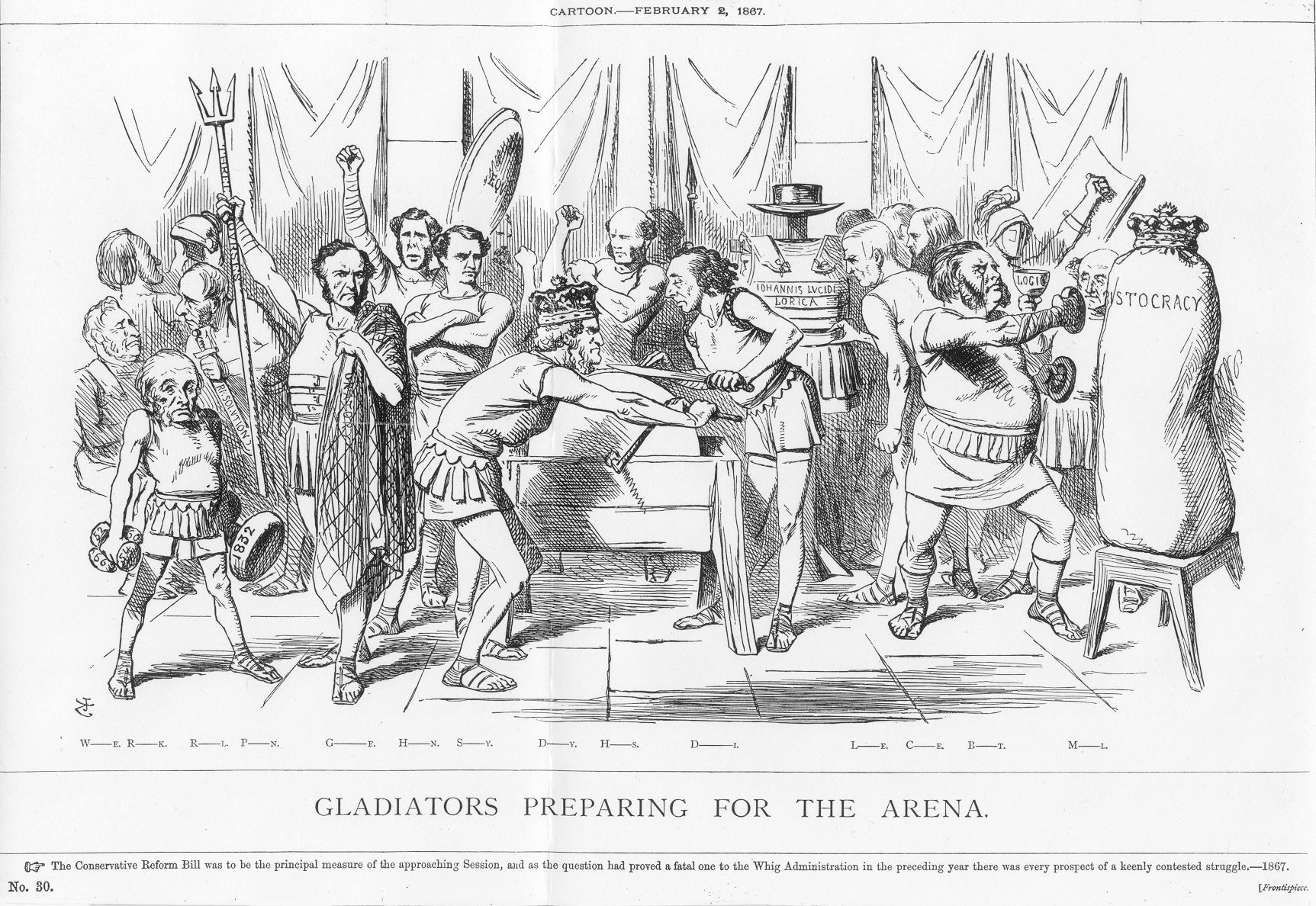The Secret History of the Dismal Science. Part I. Economics, Religion and Race in the 19th Century
By David M. Levy and Sandra J. Peart

“In choosing Mill as their target, Carlyle and his allies chose well. Like most classical economists, Mill treated such characteristics as race as analytically irrelevant.”
Thomas Carlyle (1795-1881). Essayist, historian and greatest speaker for
hierarchy of his era. A master stylist, he is quoted several thousand times
in the Oxford English Dictionary.
Thomas Robert Malthus (1766-1834). Economist who examined the relations of
population and welfare. Authored An Essay on the Principle of Population.
John Stuart Mill (1806-1873). British philosopher, essayist and economist,
best known for his utilitarian defence of limited government. Authored Principles of Political Economy.
John Ruskin (1819-1900). British art critic, painter and essayist, who
examined the religious, moral, economic and political significance of art.
He argued that art reached its zenith in the Middle Ages, when it reflected
spiritual concerns.
While this story is well-known, it is also wrong, so wrong that it is hard to imagine a story that is farther from the truth. At the most trivial level, Carlyle’s target was not Malthus, but economists such as John Stuart Mill, who argued that it was institutions, not race, that explained why some nations were rich and others poor. Carlyle attacked Mill, not for supporting Malthus’s predictions about the dire consequences of population growth, but for supporting the emancipation of slaves. It was this fact—that economics assumed that people were basically all the same, and thus all entitled to liberty—that led Carlyle to label economics “the dismal science.”
Carlyle was not alone in denouncing economics for making its radical claims about the equality of all men. Others who joined him included Charles Dickens and John Ruskin. The connection was so well known throughout the 19th century, that even cartoonists could refer to it, knowing that their audience would get the reference.1
Ruskin Tramples the Dismal Science
To see the dismal science/emancipation connection at work, consider the cartoon to the right, which originally appeared on the cover of a collection of extracts from essays by John Ruskin, a well-known cultural critic of capitalism. The collection, called Ruskin on Himself and Things in General, was one of the Smoke-Room Booklet series published by Cope Brothers, a tobacco company, and given away in tobacco shops and bookstores.
The cartoon’s most striking feature is the contrast between Ruskin and his enemy. Ruskin’s bearded, thin white face and aquiline nose contrasts vividly with the nearly hairless, dark broad face and flat nose of his slain enemy. The dark skinned figure’s hands resemble claws, and the arabesque of his formal dress looks like a tail. In his left hand, he clutches a bag that says “Wealth of Nations” and “L. S. D.”— the abbreviation for “pounds, shillings, and pence”. The cartoonist is clearly taking Adam Smith’s abstract title literally. Beside the sprawled figure is a book, perhaps the very book he was reading as death overtook him. It is entitled “The Dismal Science.” Armed only with sharp teeth and claws and such insight as might be found in the “Wealth of Nations” or the “Dismal Science” he died alone, with only these useless abstractions and the now, also useless, money as companions.
Political Economy, Exeter Hall and Black Emancipation
That Ruskin’s enemy would be reading economics is no surprise. Ruskin’s own attorney believed that the cartoon was simply giving graphic form to “Mr. Ruskin’s well known antipathy to political economy.”2 But why is the enemy, with his ape-like face, sharp pointed teeth and tail, so obviously a caricature of an African? What do Africans have to do with Adam Smith and “The Dismal Science”?
To answer these questions, we need look no further than the essay in which Thomas Carlyle first labeled economics the “dismal science”. The essay, which was the opening salvo in a battle that raged over the next fifty years, was entitled “An Occasional discourse on the Negro Question.” First published in 1849, it contains the following paragraph:
Truly, my philanthropic friends, Exeter Hall Philanthropy is wonderful; and the Social Science—not a “gay science,” but a rueful—which finds the secret of this universe in “supply-and-demand,” and reduces the duty of human governors to that of letting men alone, is also wonderful. Not a “gay science,” I should say, like some we have heard of; no, a dreary, desolate, and indeed quite abject and distressing one; what we might call, by way of eminence, the dismal science. These two, Exeter Hall Philanthropy and the Dismal Science, led by any sacred cause of Black Emancipation, or the like, to fall in love and make a wedding of it,—will give birth to progenies and prodigies; dark extensive moon-calves, unnameable abortions, wide-coiled monstrosities, such as the world has not seen hitherto!3
Even this short excerpt illustrates the spirit of Carlyle’s argument: When economics joins with Exeter Hall, in support of such causes as ending slavery, bad things will happen.
The Anti-Slavery Coalition
John Bright (1811-1889). Perhaps the most important 19th century British
politician who never became Prime Minister, he led the fight for free trade
in England. Only Disraeli and Gladstone were more often caricatured in
Punch.
Evangelicals. Christians who believe in the literal truth of the Bible. They
asked on the slaves’ behalf: “Am I not a man and a brother?”
The Exeter Hall that Carlyle mentioned was a real building. Located on the Strand in London, it served as the political center of British evangelicalism. By invoking the marriage of economics and Exeter Hall, Carlyle is reminding us of a vastly important fact about 19th century British politics: Exeter Hall was not the only moral center of the British anti-slave movement. In the fight against slavery, Christian evangelicals such as William Wilberforce and Thomas Macaulay were joined by political economists, such as James Mill, Harriet Martineau, J. S. Mill, Archbishop Richard Whately and John Bright. The two sides agreed that slavery was wrong because Africans are humans, and all humans have the same rights. They however disagreed over exactly what it is that ties us together. The economists drew on their assumption that deep down, we all share the same basic human nature. The evangelicals drew on their assumption that we are literally all brothers and sisters since we share the same first parents, Adam and Eve.
Carlyle disagreed with the conclusion that slavery was wrong because he disagreed with the assumption that under the skin, people are all the same. He argued that blacks were subhumans (“two-legged cattle”), who needed the tutelage of whites wielding the “beneficent whip” if they were to contribute to the good of society.4
William Rathbone Greg (1809-1881). Now forgotten, his essays were extensively quoted by
contemporaries, including Charles Darwin.
Eugenics. The doctrine that society can improve itself by controlling who
has children. Its policy implications range from prohibiting incest to
sterilizing the “unfit.”
Carlyle is hard to take seriously because he is so outrageous. Yet it is important not to underestimate his influence. By laying out the argument against economics in detail, Carlyle revived the pro-slavery movement in mid-19th century Britain. His argument was taken up by calmer critics, who eschewed his polemical excesses while retaining his basic assumptions. For example, W. R. Greg,5 who together with Francis Galton, founded the eugenics movement, attacked Mill for arguing that land-reform would help solve the problem of poverty in Ireland:
“Make them peasant-proprietors,” says Mr. Mill. But Mr. Mill forgets that, till you change the character of the Irish cottier, peasant-proprietorship would work no miracles. He would fall behind the instalments of his purchase-money, and would be called upon to surrender his farm. He would often neglect it in idleness, ignorance, jollity and drink, get into debt, and have to sell his property to the newest owner of a great estate. … In two generations Ireland would again be England’s difficulty, come back upon her in an aggravated form. Mr. Mill never deigns to consider that an Irishman is an Irishman, and not an average human being—an idiomatic and idiosyncractic, not an abstract, man.6
Mill was not the only reformer whom Greg pilloried for ignoring the truth about human nature. Later in the same article, Greg went after John Bright. A Quaker Member of Parliament, Bright was well-known for his very radical free market, anti-imperialist, anti-racist views:
“Purchase the estates of English and absentee landlords, and then re-sell them to Irish middle-class tenants in decent-sized farms,” says Mr. Bright, who, again, like Mr. Mill, fancies that an Irishman is an English or a Scotch or a Swiss or Belgian cultivator …7
Given his public prominence, Bright was an easy target for cartoonists as well as essayists. Two of these cartoons, from the pages of the satirical London magazine Punch, are reproduced here. In the first, the enemy, as in the Ruskin cartoon, is racially caricatured. This time, however, the sub-human race is Irish. We see Bright with the broad-brimmed hat of a Quaker hawking “Radical reform” to the Irish semi-humans. In the second, we get a view of the relationship between Mill and Bright. Mill holds a cup of “Logic” while Bright does the heavy hitting. Like Greg, Punch’s artist finds little to distinguish Mill and Bright across their religious divide.
In choosing Mill as their target, Carlyle and his allies chose well. Like most classical economists, Mill treated such characteristics as race as analytically irrelevant. When doing economics, one would simply ignore race, and look at incentives. Here are Mill’s acidic words on the matter, words which might have drawn Greg’s ire:
Is it not, then, a bitter satire on the mode in which opinions are formed on the most important problems of human nature and life, to find public instructors of the greatest pretensions, imputing the backwardness of Irish industry, and the want of energy of the Irish people in improving their condition, to a peculiar indolence and insouciance in the Celtic race? Of all vulgar modes of escaping from the consideration of the effect of social and moral influences on the human mind, the most vulgar is that of attributing the diversities of conduct and character to inherent natural differences.8
This idea, that people are just people, can be traced from Mill back to Adam Smith’s Wealth of Nations. In it, Smith put forward the hard rational choice doctrine that there are no natural differences among people. There are no natural masters; there are no natural slaves. All human differences can be explained by incentives, history and luck:
The difference of natural talents in different men is, in reality, much less than we are aware of; and the very different genius which appears to distinguish men of different professions, when grown up to maturity, is not upon many occasions so much the cause, as the effect of the division of labour. The difference between the most dissimilar characters, between a philosopher and a common street porter, for example, seems to arise not so much from nature as from habit, custom, and education. When they came into the world, and for the first six or eight years of their existence, they were, perhaps, very much alike, and neither their parents nor playfellows could perceive any remarkable difference. About that age, or soon after, they come to be employed in very different occupations. The difference of talents comes then to be taken notice of, and widens by degrees, till at last the vanity of the philosopher is willing to acknowledge scarce any resemblance.”9
Coming Attractions
Over the next several months, we’ll explore in more detail the ways in which Smith’s heirs fought against the “vanity” of those who claimed that there was “scarce any resemblance” between the English and various other peoples. We’ll begin by looking at the technical and moral issues raised by Carlyle and Mill in their debate over race and slavery. We’ll see how their positions showed up in the Governor Eyre controversy, which ripped intellectual Britain into two warring camps in 1865. The controversy, which was sparked when British officials withdrew the protection of the rule of law from Jamaicans of color, raised such issues as: Could the use of wire whips as instruments of state terror be excused just because they were wielded by white hands against black skin? Could the execution of prisoners without trial be excused just because those who held the rope were English and those who fell through the gallows trap were Jamaican?
We shall also ask how is it that the Biblical literalists of the Jamaica Committee—whose obligation to distant, dark skinned people derived from Revelation that as Adam and Eve were real, people across races are kin—elected as their head, the Unitarian John Stuart Mill, who did not believe that every word in the Bible was true.10 We’ll also ask how it is that those who defended the wire whips and the judicial lynch—Carlyle, Ruskin, Dickens, Charles Kingsley—are celebrated by scholars in achingly correct modern English departments as “progressive thinkers” against those who protested in the name of the rule of law for people of all color.
We’ll then move on to consider the influence of eugenics, founded by Greg and Francis Galton—inventor of regression and correlation analysis—on economics. Finally, we’ll travel across the Atlantic, to look at the debate’s influence in the United States, where its echoes reverberate through Harriet Beecher Stowe’s classic, Uncle Tom’s Cabin.
By the time we are done, we hope you’ll agree that economists should be proud to practice the dismal science.
For more on this fascinating story, see David M. Levy, How the Dismal Science Got Its Name: Classical Economics & the Ur-Text of Racial Politics, University of Michigan Press, Fall 2001.
Fraser 667, p. 2. University of Liverpool Library.
Carlyle, An Occasional discourse on the Negro Question, pp. 672-73.
We shall discuss Carlyle’s views, along with Mill’s, in more detail in our next column.
We shall discuss Greg and Galton’s use of eugenics to attack the classical principle of laissez-faire in our third column.
[W. R. Greg], “Realities of Irish Life,” Quarterly Review (1869) 126, p. 78.
Greg, p. 79.
Mill, Principles of Political Economy, Toronto edition, p. 319. Ashley edition.
Smith, An Inquiry into the Nature and Causes of the Wealth of Nations, Glasgow edition, p. 28. Cannan edition.
Bernard Semmel, The Governor Eyre Controversy, 1962.
*Sandra J. Peart is associate professor of economics, Baldwin-Wallace College.
For more articles by David M. Levy and Sandra J. Peart, see the Archive.



